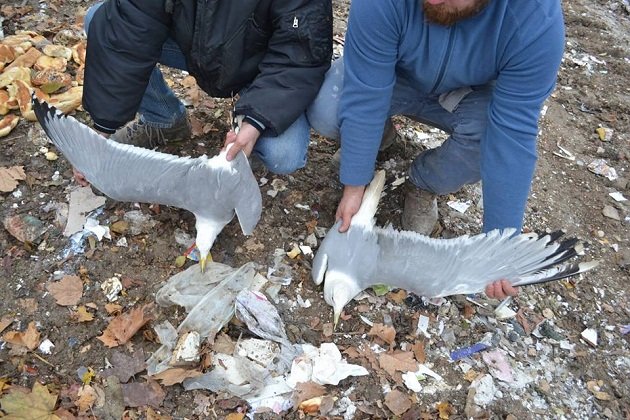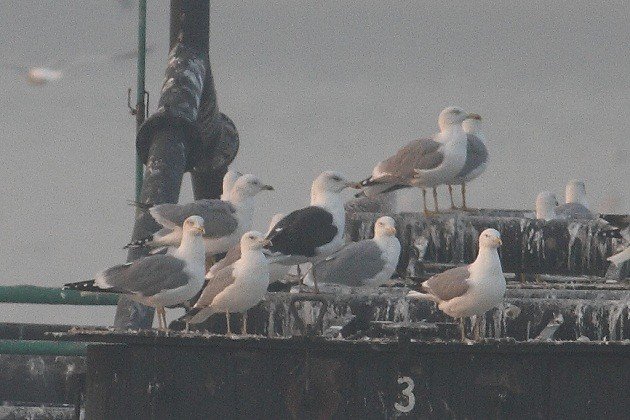
Cover photo: Yellow-legged (left), Caspian Gull (right) – Courtesy of cro-ringing.blogspot.com
How to count tens of thousands of birds that are all white below and grey above? I mean, it is easy to count them all, but what I want are numbers of individual species within such flocks and not just numbers of them all together.
I am an experienced bird counter, but until a few years ago, I was mostly counting waterfowl, where you can easily tell the species apart, even in large mixed flocks. Gulls are harder to tell apart. If I focus on individual birds, I can, but then I am missing the big picture.
Last winter I counted their afternoon flyover from the feeding area (the city rubbish tip) to their roosting sites (still only partially and poorly known). The flocks were some 600-700 metres away (or more) in the poor light of a winter afternoon (quickly turning into sunset), so what I was counting were “small gulls” (which here, in Serbia, translates into mostly Black-headed Gulls, but mixed with a percentage of Common Gulls) and the “large gulls” (in winter, predominantly Caspian Gulls, but with a percentage of Yellow-legged among them).
Also possible are occasional wintering European Herring Gulls (of which we know very little), plus two more species, rare in the countryside, but a few birds are regular in Belgrade – the Lesser Black-backed and the Great Black-backed Gulls. The last two are easy if we are talking about adults, but noticing an immature among hundreds or low thousands is not that easy (not to add that I do not feel confident with immatures).
Back to what I did last winter: I visited the rubbish tip to get an idea of the percentage of rarer species within those large flocks, and then, while counting the flyover, I would split the numbers according to those percentages but I am not happy with this as it is far from precise.
 Yellow-legged, Caspian and the Great Black-backed Gull, November 2015, Belgrade; by Snezana Panjkovic
Yellow-legged, Caspian and the Great Black-backed Gull, November 2015, Belgrade; by Snezana Panjkovic
This autumn I changed the approach somewhat, focusing on a day roost of large gulls at a barge moored by the bank of the 1000 metres wide Danube. At first, using the manual counter I counted the total number (470) of large gulls. Then I focused on splitting the species because they were both Caspian and Yellow-legged. But how? In winter, YLG has bright yellow, while CG often has pale yellow legs – not very useful. If I try to focus of the bill and a head shape of each individual, it would take ages – not practical.
But, the birds were standing side by side, many parallel to each other, at the same angle to the low sun, so their colour would not be affected by the shadows. And when I am talking of adults, it is quite possible to tell them apart by the shade of pale-grey mantle of Caspian versus the darker grey-bluish of the Yellow-legged. That way, I counted some 50 Yellow-legged, which was about 11% of the total number.
Later I counted some 600 more large gulls at the water, much further away, and applied that percentage to them. This was much more precise than just guessing the percentages at the rubbish tip, but one more bias remained: I counted the number of adult Yellow-legged Gulls, missing the harder to tell immatures altogether, so the real percentage was higher.
What is your approach? How do you count tens of thousands of birds that are all white below and grey above?











I enjoy sorting through and counting gull flocks, but I think it’s a little easier where I bird since there are three main species in winter flocks, and they’re easily separable by size (if not always by plumage).
Pity, I have a great roost of large gulls nearby, but no easily approachable roost of smaller gulls (and more ringed birds are among them). The smaller gulls tend to roost 2-3 km upstream, but off-limits to cars.